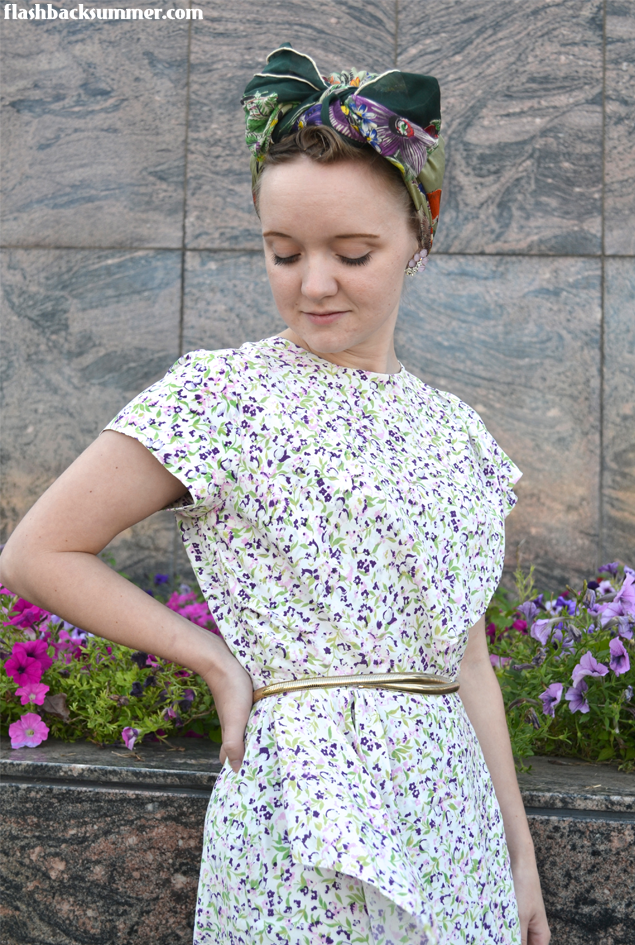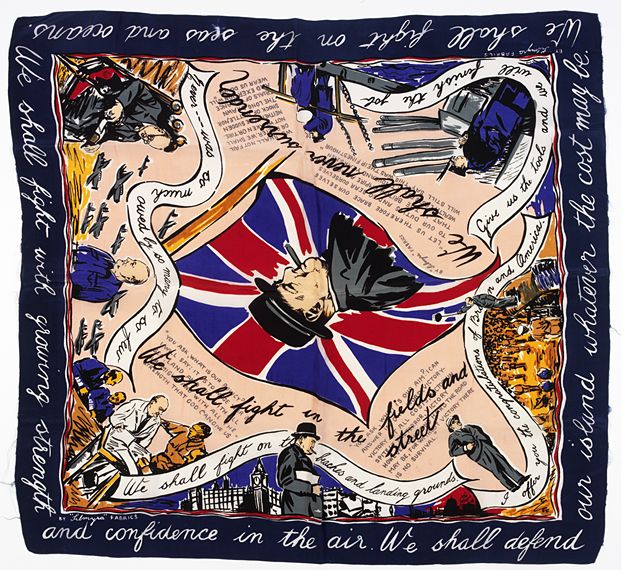
I think I found this dress in a flea market quite a long time ago for a few bucks, and although it was quite tattered I decided to bring it home. (Never pass up good rayon, you know!) It has sat in my closet for… probably a year, waiting to be brought back to life. Finally, this past weekend I attended a wedding which was the catalyst to restore this dress! It's been my unofficial tradition this summer to wear a new-to-me dress that I end up finishing on the way to the out-of-state weddings we've attended. This dress continued that!


The problem with the dress was three things: it was a bit big on me, the darts were too low, and nearly all of the bodice and waist seams had frayed so the dress was falling apart. But… good rayon! First I took apart the bodice pieces completely. I left the skirt intact because those seams remained strong. I traced all the bodice and skirt pieces (for future re-creating, of course!), then I adjusted the darts. This dress has two French darts on either side, and I've never made or adjusted such darts. I put the bodice on my dress form and pinned where I wanted the darts to go. I was sure to match both sides and to re-draw the darts on my pattern pieces.
The distance between both darts at the side seam and at the point aren't exactly right, but I was really hard up for fabric as I was trying to adjust this bodice, so it had to work. It isn't very noticeable with the print anyway, so I'll leave it and just adjust them on any other future re-creations of the dress I do.


I trimmed away the fraying on all the seams and sewed the pieces back together on the sturdy sections of the fabric further in. This did double duty in making the dress strong and smaller for me, and it fits beautifully now! I love the drape of the flounces on the shoulder and hip, and the light rayon blows beautifully in the breeze! It's really a perfect summer dress, and I am sad I waited until the end of the summer to fix it up!
There are also a couple holes that I'm going to need to patch. They get lost in the busy print so it's not noticeable to anyone but me, but I want the dress to be strong and not fray further in those spots! I am going to use the fabric from the old back neck facing that I replaced with bias tape. If you are working on a vintage piece and realize you need to patch something, it's nearly impossible to find a matching fabric for it now. You really need to find a piece of the garment you can repurpose for a patch, and neck facings, arm facings, and hems are great places to do that. Facings are easily replaced with bias tape, and hems can be let down a bit sometimes. Sewing hint for life!


In my opinion, restoring vintage is a lot harder than recreating it from scratch. It's difficult to work with limited fabric, especially knowing that you have no back up fabric to work with if you mess up. You have to learn to be careful, intentional, and resourceful. This is the beauty of the make do and mend skill set!
And another random note about this outfit… The headscarf coordination was actually a happy surprise. That morning I pin curled my hair so it would be curly for this photo shoot after work. I had no purple, pink or green solid scarves, so I grabbed the closest thing I could find, and I was bummed it didn't match. However, I realized I actually love this dress and scarf combo so much so that I decided to leave it for the photo shoot! It's now one of my favorites!
Outfit details
dress: restored 1940s
shoes: from the 70s or 80s, wood & leather heels, gifted
earrings: belonged to my great-grandmother
headscarf and belt: flea market finds
What are your top tips for restoring a vintage garment? Do you find it harder to restore or to sew from scratch? Have you found any favorite outfit pairings by accident?

































